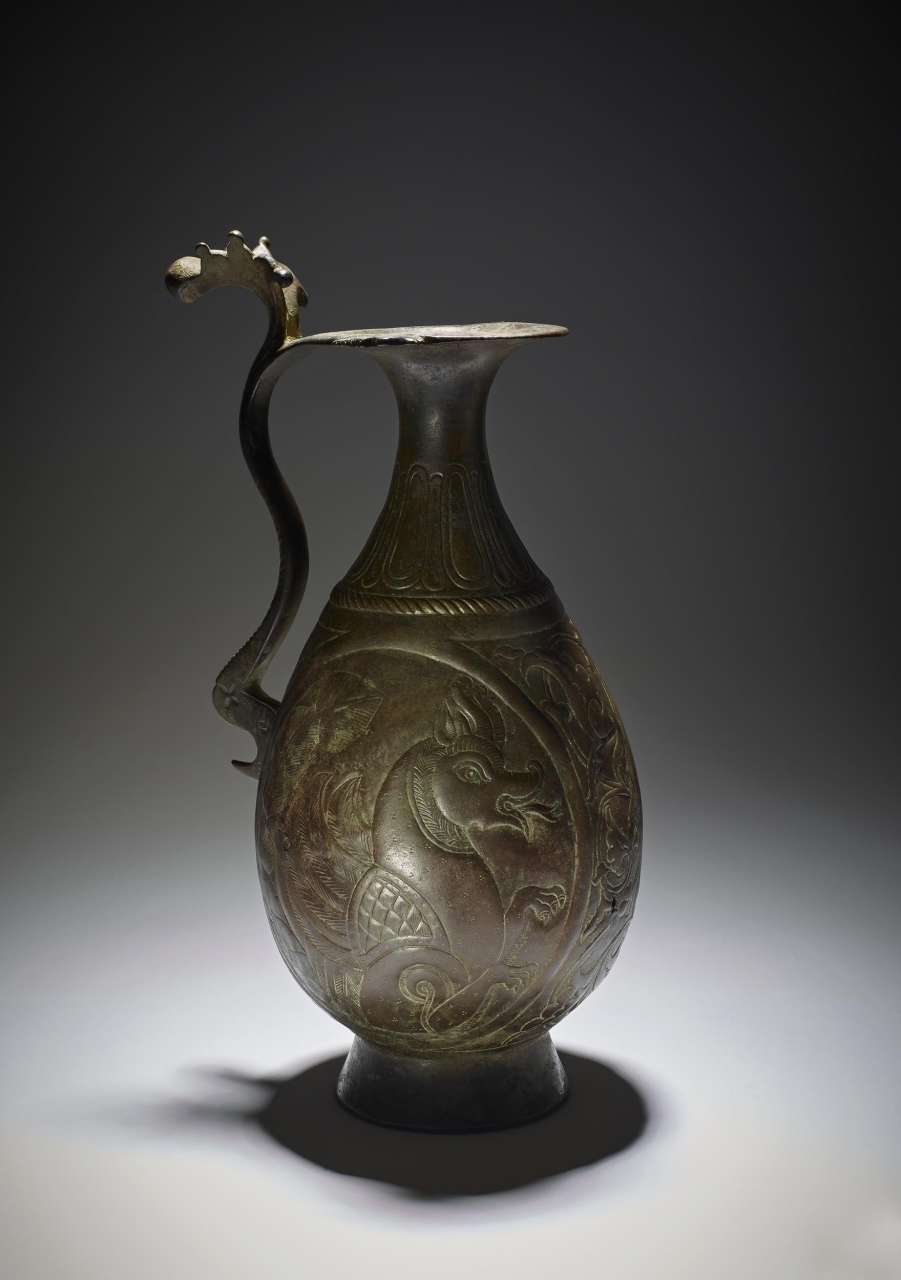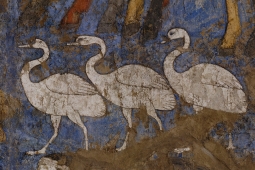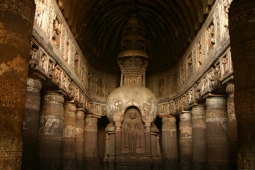Cultural Selection: Cross-Cultural Influences Reflected in a Bactrian Ewer Depicting Scenes from Ancient Greek Mythology
© The Trustees of the British Museum/ A Greek red-figured water jar depicting the Judgement of Paris, a scene also depicted on tSometimes practical and sometimes a piece of decorative art, ewers are tall thin vessels with a wide base, spout, and handle that have been uncovered from numerous archaeological sites from along the lengths of the Silk Roads. One notable example which exemplifies the ways in which different elements from across Eurasia were often combined together to make objects of hybrid styles and influences, is a silver ewer found in the tomb of a man who lived in the 6th century CE in North-western China. Most likely made in Bactria in present-day northern Afghanistan, this ewer perfectly illustrates Silk Roads interactions in that it was made using Sasanian techniques in metal working, displays literary motifs from Classical Greece in its exterior decoration, and combines these with stylistic influences from the Indian Subcontinent to create a luxury object which ultimately reached China.
The ewer is believed to have been produced in Bactria, an ancient region bordered by the Hindu Kush mountains to the south and the Amu Darya river to the North, sometime around the year 500 CE. This location was significant on the Silk Roads, sitting at the crossroads of routes to the city of Merv, the Caspian and Iranian Plateau, routes North to Sogdiana, East to China and South to the Bamiyan basin and on towards the Indian Subcontinent. It is not known precisely how the vessel was transported to China, nor is the exact context in which it was produced or how it made its way into the possession of the Chinese man in whose tomb it was uncovered. Interestingly, the ewer was found alongside Sasanian wares including a seal ring, glass bowl, and sword.
Art of this kind produced in Bactria was heavily influenced by Hellenistic metal and ceramic wares. However, this ewer was made in in the Sasanian tradition, formed by hammering the metal into the required shape. Despite this, the ewer’s decorative elements do not appear to have been heavily influence by Sasanian art, but instead reference stories from Classical Greek mythology. Additionally, there are a few other design features which set the ewer apart from other Sasanian wares produced with the same technique. For example, the Bactrian ewer has a hexagonal handle whilst Sasanian handles were usually square in shape. Sasanian wares usually had a single register (the number of sections or panels into which the ewer is divided on the body), whereas the Bactrian ewer has two. Finally, Sasanian pieces from this period typically show no decoration on the neck and bottom of the vessel whereas the one found in the Chinese tomb features beaded decoration typical of Roman wares from the 4th and 5th centuries CE.
Notably, the decoration on the outside of the ewer, three scenes each including a figure of a man and a woman, appear to be depictions, or at least references to, three stories from Greek mythology associated with the events of the Iliad. This cycle of stories linked to the epic poem are commonly depicted on Greek vases and wall paintings from the 6th century BCE onwards. On the Bactrian ewer, these scenes have been interpreted by scholars as representing the Judgement of Paris, and the abduction and later return of Helen of Troy. In terms of artistic influences from along the Silk Roads, in the third scene on the ewer Helen wears a type of headdress not seen in Greek art and is shown face-on in a pose often called the tribhanga or ‘tri-bent pose’, a standing body position typical of Indian art and utilised in statues of bodhisattvas from this time period across the Indian Subcontinent and parts of Central Asia and China. Finally, the style and placement of the folds of the fabric in the clothing she wears show clear influences from Indian artistic tradition rather than from the Hellenistic art from which the scenes are derived.
The Silk Roads facilitated the exchange of various literary and artistic traditions across Eurasia as stories spread via monks, scholars, pilgrims, travellers, and traders moving across these routes. They also helped design motifs and artistic influences to travel vast distances as they were incorporated into luxury objects of trade and diplomacy and introduced to new regions. Although we can’t know with certainty whether or not these motifs, references, and representations from the mythology and artistic traditions of other regions of the Silk Roads would have been familiar or well known to all those who encountered them in new contexts, the use of elements from the mythology and art of foreign cultures nevertheless reflects the high levels of mobility and interaction of various elements across the regions connected by the Silk Roads.










